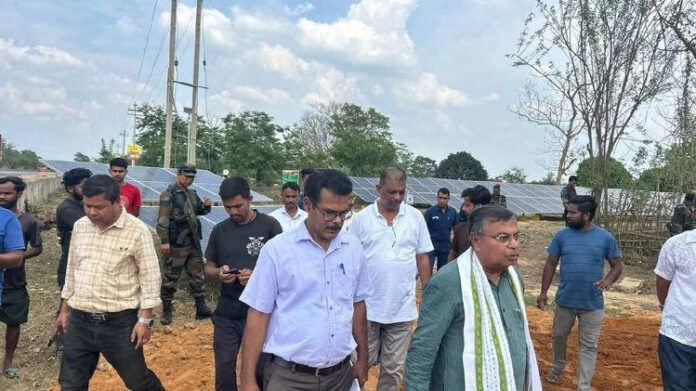Rangachara village in Tripura is poised to become the state’s first fully solar-powered village. This ambitious initiative, which aims to bring renewable energy to the doorstep of over 600 households, marks a new chapter in Tripura’s rural transformation and sets a model for eco-friendly development in the Northeast.
Nestled in the South Tripura district, Rangachara has long struggled with erratic electricity supply and limited infrastructure, like many other remote areas in the region. With this solar village project, the state government, in collaboration with the Tripura Renewable Energy Development Agency (TREDA) and central agencies, is set to provide uninterrupted power to all the families in the village using decentralized solar technology.
The project, which is being implemented under the Solar Village Scheme and supported by the Ministry of New and Renewable Energy (MNRE), includes the installation of rooftop solar panels, battery storage systems, and energy-efficient appliances for each home. In addition, street lighting, community facilities such as schools and health centers, and irrigation systems will be solar-powered, ensuring that clean energy drives every aspect of rural life in Rangachara.
Officials estimate that the village will generate more than 500 kilowatts of electricity daily, sufficient to meet the needs of its population without depending on the conventional grid. Each household will receive a basic energy package that includes lighting, a fan, and the capacity to charge small electronic devices. Solar water pumps for agriculture and solar-powered borewells are also part of the initiative to support the village’s agrarian economy.
The project isn’t just about electricity—it’s about empowerment. By switching to solar energy, Rangachara will witness a ripple effect on multiple fronts: improved education outcomes with better-lit study environments, enhanced healthcare delivery with power for medical equipment and refrigeration, and increased safety with well-lit streets at night. Most importantly, the burden of power outages and reliance on costly diesel generators or kerosene lamps—often borne disproportionately by women and children—will be lifted.
Training and capacity-building are key components of the program. Local youth are being trained in solar panel installation, maintenance, and basic troubleshooting, opening up new avenues for employment and entrepreneurship within the community. Women’s self-help groups are also being engaged to help manage solar units and promote awareness about energy conservation.
Tripura’s Chief Minister, Dr. Manik Saha, lauded the initiative, calling it “a turning point in the state’s journey toward green and inclusive development.” During a recent visit to the village, he remarked, “Rangachara will be a beacon for sustainable living, showcasing how clean energy can transform lives without harming the environment. Our goal is to replicate this model across other rural areas in Tripura.”
The move aligns with India’s national commitment to renewable energy and climate action. Under the Panchamrit targets announced by Prime Minister Narendra Modi at the COP26 summit, India has pledged to meet 50% of its energy requirements through renewable sources by 2030. Projects like the Rangachara Solar Village help bring these lofty climate goals down to earth, creating grassroots impact where it’s needed most.
TREDA officials revealed that the project cost is being jointly borne by central and state funds, with some beneficiary contribution to ensure community ownership. They also noted that once operational, the solar systems will require minimal maintenance, and each system is expected to last at least 20 years.
The success of Rangachara could act as a catalyst for similar initiatives across the Northeast, where difficult terrain and scattered settlements often make traditional electrification costly and inefficient. With solar energy offering a decentralized and clean alternative, the region stands to benefit immensely.
As Rangachara readies to flick the switch on a new era, it does so not just as Tripura’s first solar village, but as a symbol of hope, resilience, and innovation. In the quiet hum of solar inverters and the glow of LED lights, a brighter, greener future is beginning to take shape—powered by the sun, and driven by the will of the people.




